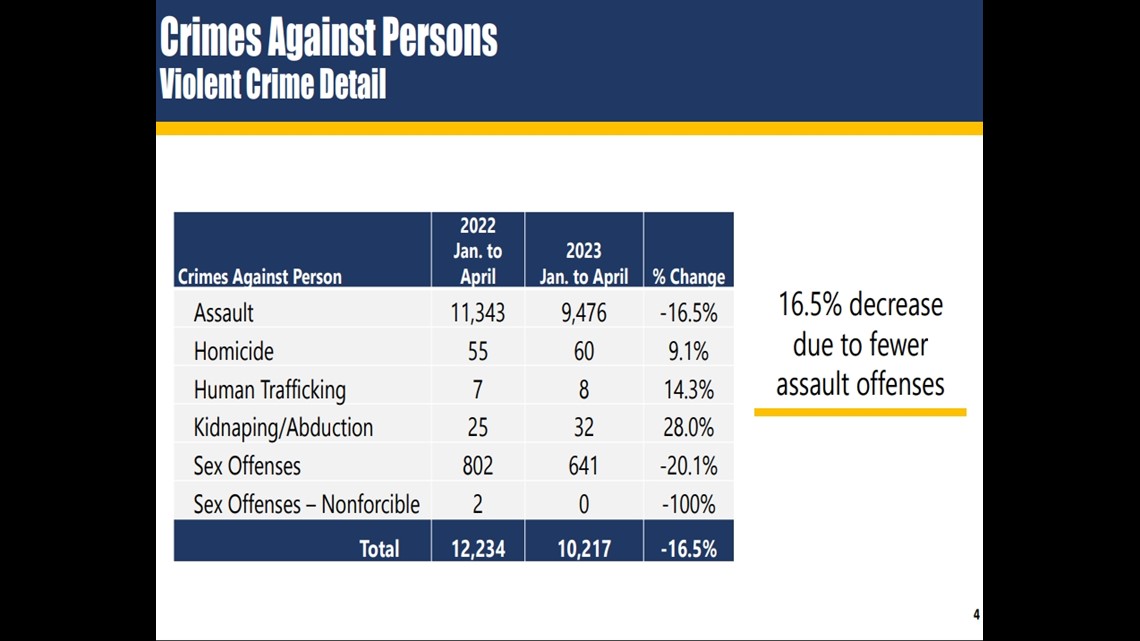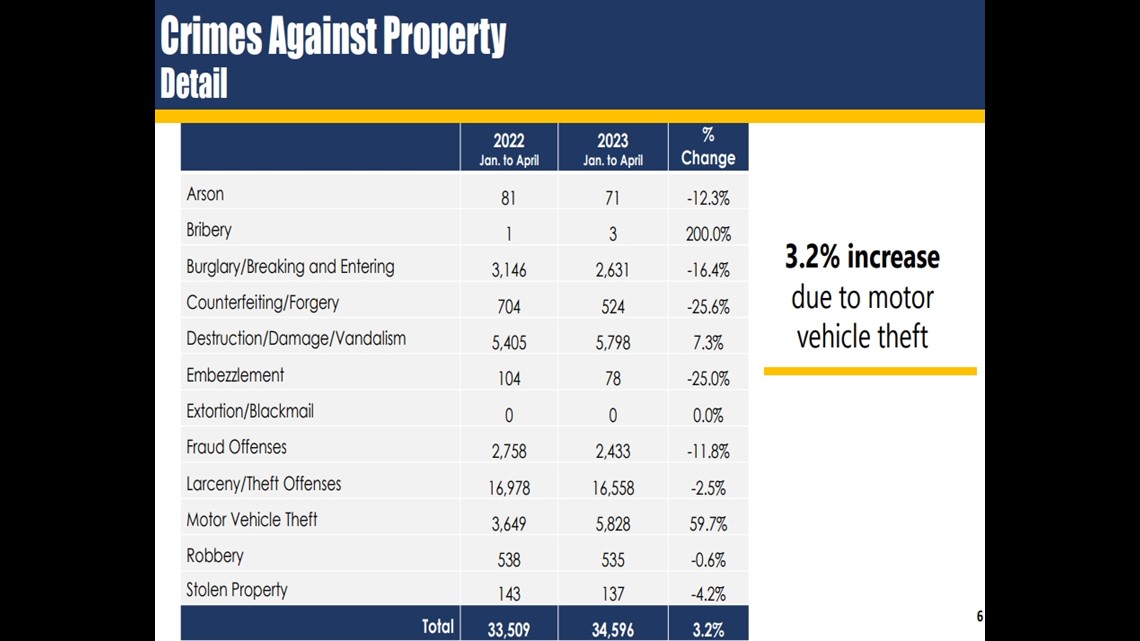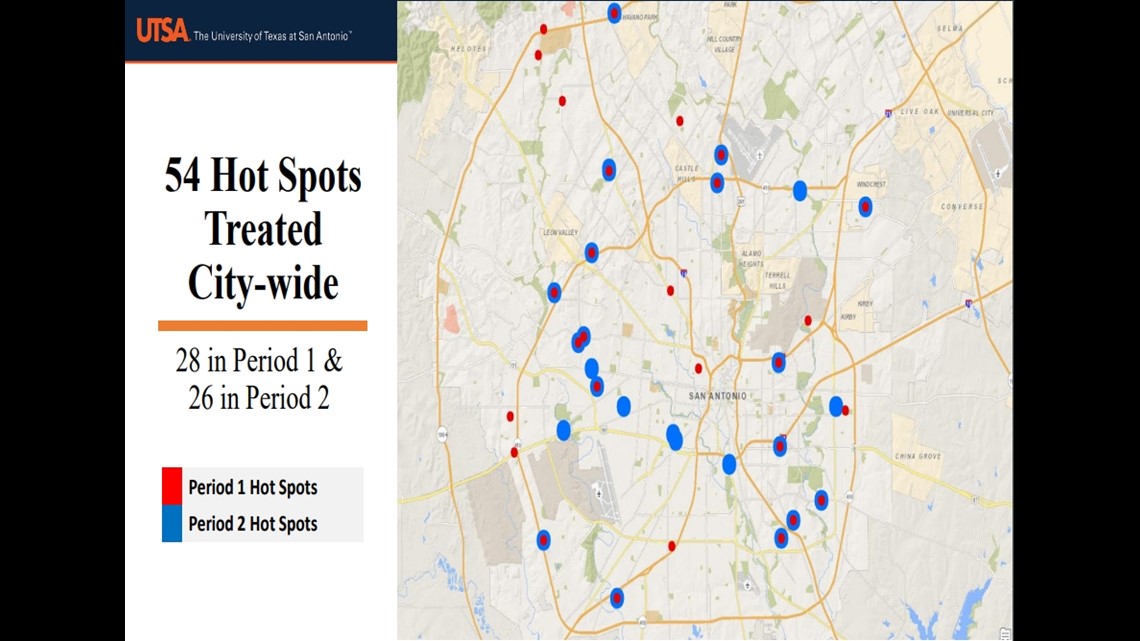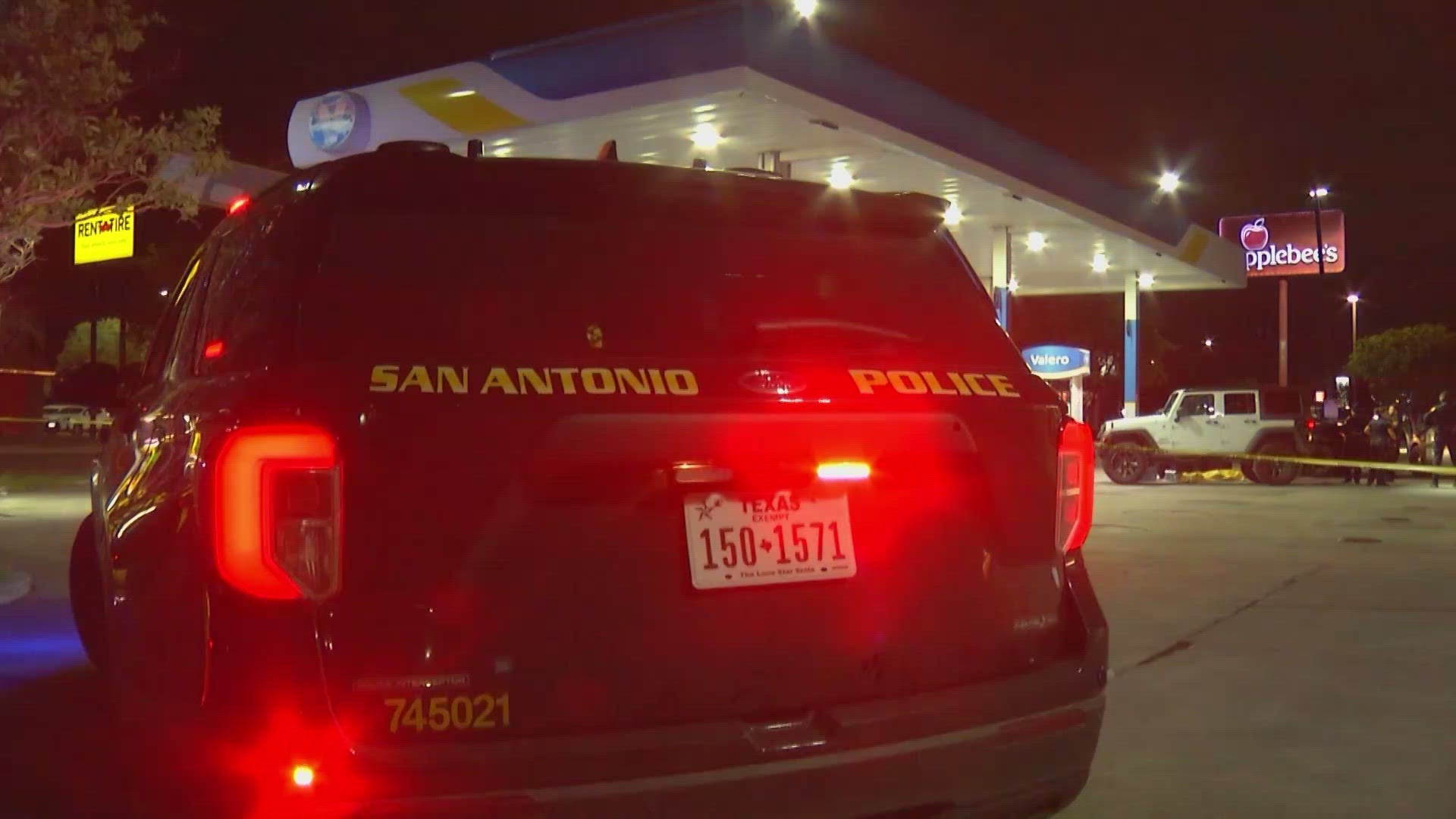SAN ANTONIO — San Antonio Police and criminology professors at UTSA presented their findings Wednesday on the first phase of the department's Violent Crime Reduction Plan.
SAPD says statistics show a 2.4% decrease in crime across the city. SAPD Chief William McManus says he is "cautiously optimistic" these trends will continue into the summer.
UTSA says its too early to tell whether the plan, in the first five months of implementation, is the cause for the reduction.
“We’re cautious about claiming cause and effect at this point. We’re early on. We haven’t even been through, we haven’t come to a six-month mark yet, let alone the first year,” Dr. Michael Smith, UTSA Criminology professor, told reporters.
SAPD statistics show that assault cases have decreased 16.5%, but some violent crimes, including homicide, have increased.


There were 55 homicides reported in January 2022 and April 2022, compared to 60 homicides in the same period during 2023. In broad strokes, Smith said he likes the findings, but he said there are still problems.
“Crime is down in the hot spots. Crime is down citywide compared to a 12-month average and compared to the same period last year,” Smith added.
Crimes against property have increased 3.2% due to a drastic jump in motor vehicle thefts. In the first four months of 2022, 3,649 motor vehicle thefts were reported, compared to 5,828 in the same timeframe this year.


More details on SAPD’s Hot Spot police initiative were also presented to council. UTSA Criminology professors say there was a reduction in violent crime incidents in the hot-spot treatment areas.
The difference in policing is more visibility. Officers will sit in their cars with their lights on at certain days and certain times for 15-minute periods.
According to a map, 54 hot spots were treated citywide, 28 treated in January and February and 26 treated in March and April, although there is some overlap for 17 different locations.
“That’s all determined by crime patterns, so we analyze crime data every sixty days, and the hotspot is defined by where the crime is happening,” Smith adds.


The hot-spot initiative will continue for the duration of the plan, Smith says. The next phase that will be deployed is problem-oriented place-based policing.
Problem-oriented place-based policing focuses underlying conditions that contribute to ongoing problems in areas where crime occurs, and deterrence involves changing behavior of high-risk offenders.
City Council members were asking for community input to be provided through the duration of the study. Many had issue with the presentation of the crime data, which resulted in Smith telling Councilwoman Teri Castillo “I’m sorry, you’re wrong” when she had questions about some of the findings.
Smith didn’t comment on that exchange, but said they will try to address the data presentation issues moving forward.
“We’ve done dozens of these reports now and we’ve experimented with how to show the data in various ways…it’s a push and a pull,” Smith added.

